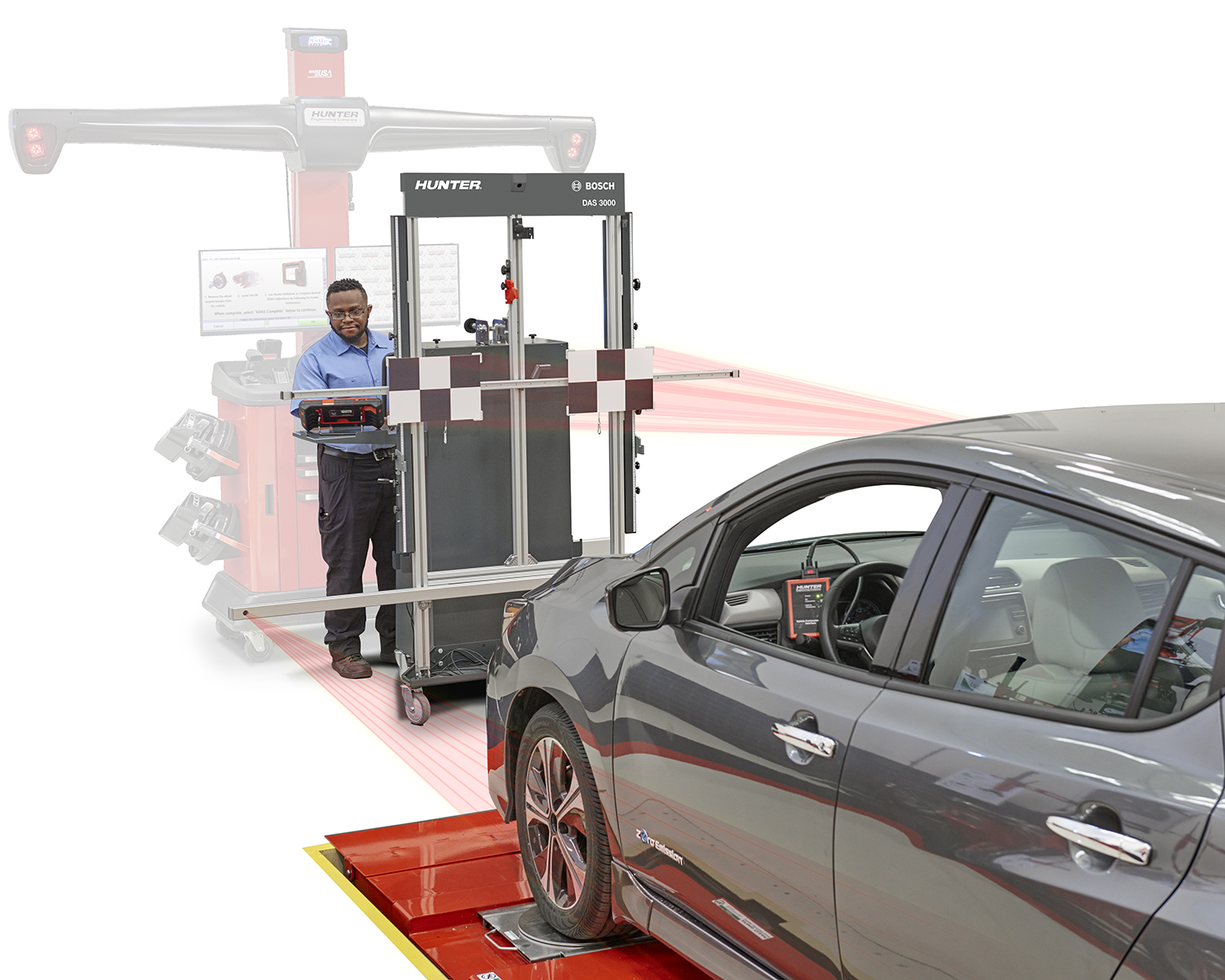General repair shops should embrace the latest developments and position themselves to grow profitability through the industry's increasing reliance on ADAS. By offering calibrations, general repair shops will create an additional and extremely reliable revenue stream.
Hunter Industry Insights
Finding the Best ADAS Calibration Equipment for Your Shop
Considering ADAS calibrations? We've got you covered. Here we'll discuss all the important factors in researching ADAS equipment and how innovative and easy-to-use Hunter products can help your shop build a profitable ADAS business. When you're ready to learn more, contact your local Hunter team for detailed product information, onsite demos and pricing options.
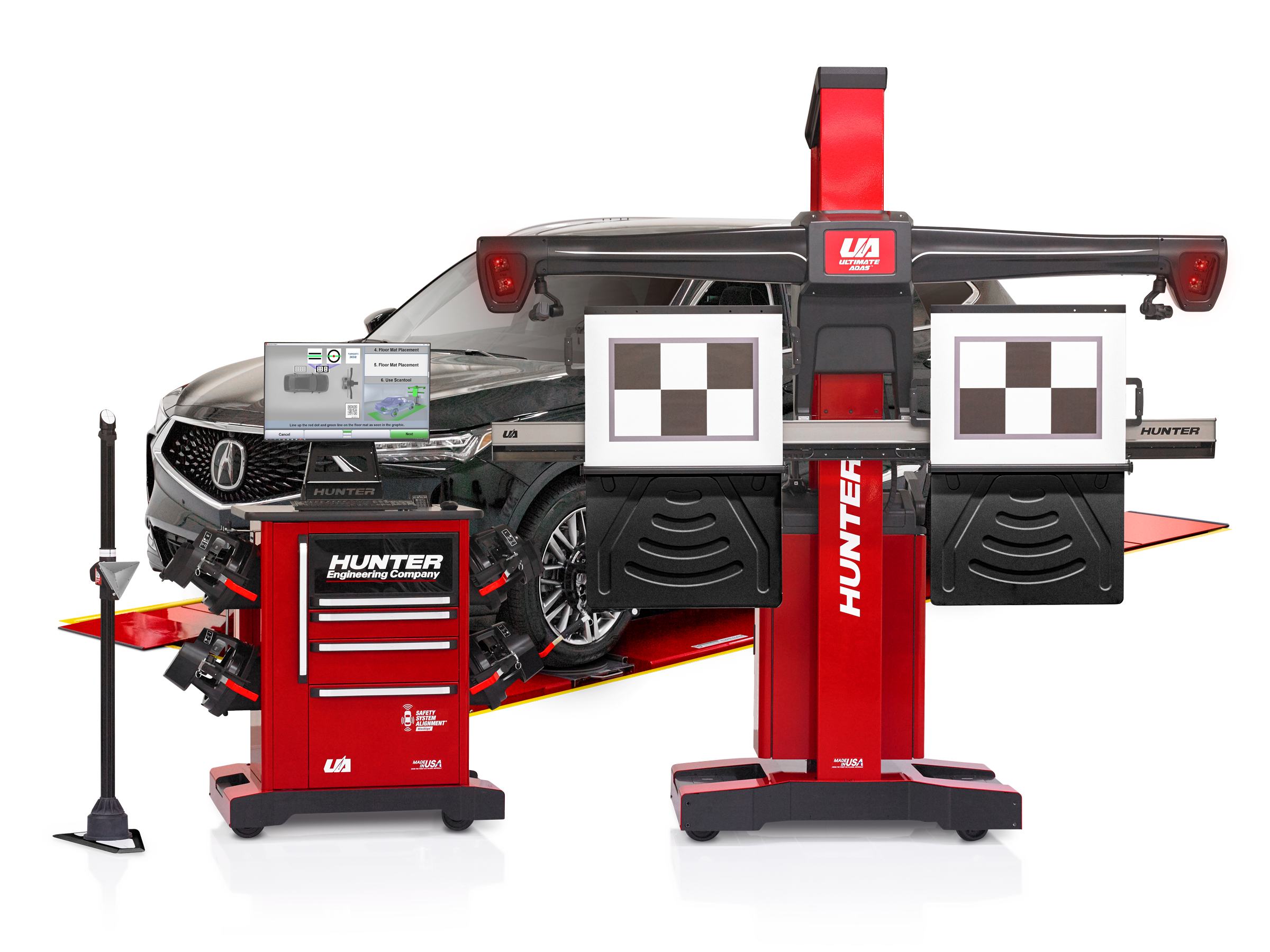
ADAS growth
Take control of ADAS
ADAS is the fastest-growing automotive market segment, forecasted to reach $65.1 billion by 2023 at a CAGR of 9.7
The amount of ADAS-equipped vehicles is skyrocketing, with more than 60 million now and increasing each year
The demand for calibrations continues to grow, with at least one in three of these vehicles requiring calibration following common services, such as a wheel alignment
ADAS Calibrations
Top 9 things to consider
How to define good ADAS calibration tools and equipment?
ROI
Consider your return on investment by calculating how quickly your equipment can pay itself off based on the number of calibrations your shop can perform.
Training & Support
What degree of training and support does the equipment manufacturer offer? Is there detailed instruction to guide technicians from start to finish?
Vehicle Manufacturer Approval
Has the equipment been tested and approved by any third party, such as the vehicle manufacturer? Ensure your equipment meets these OEM requirements.
Accuracy & Precision
It is vital that ADAS calibrations have precise measurements to ensure the safety of a customer's vehicle. Calibration equipment should take all the ambiguity out of calibrations.
Speed & Efficiency
Does the equipment integrate OE procedures to simplify set-up and calibration processes, allowing for greater speed and instilling customer confidence that the work was peformed properly?
Integration & Compatibility
Ensure that the equipment is engineered to work with a wide range of vehicle makes and models, ensuring maximum efficiency for your shop.
Reliability
Invest in dependable and durable products that meet industry standards and ensure calibrations are done correctly the first time.
Verfication & Documentation
ADAS equipment should provide detailed documentation and reports for insurance purposes and to reassure customers that the calibration was completed correctly and their vehicle is safe to drive.
User Interface
Is the equipment easy to use? Does it provide logical, straightforward instructions for shop technicians? Look for live camera-guided interface to ensure accurate step-by-step procedures.
ADAS Overview
Hunter University
This course is intended to expose the learner to the basics of ADAS technology within the automotive industry. Register now
Shop types
How do shops benefit from performing ADAS calibrations?
General repair shops
Collision shops
Collision repair facilities are perfectly situated to benefit from the steady stream of vehicles needing ADAS calibrations. Keeping this work in-house, instead of subletting, can dramatically drive profitability.
Calibration centers
Calibration centers will have an increasing role in the developing ADAS calibration marketplace. To maintain this position, calibration centers will need to invest in high-quality training and efficient, durable equipment to keep up with demand.
Automotive dealerships
ADAS technologies are evolving rapidly with frequent advancements and new functionalities introduced on a yearly basis. Dealerships able to keep up will drive customer retention by providing maintenance, repair and ADAS services at a single location for years to come.
Tire dealers
Tires are the backbone of vehicle safety. ADAS calibration are usuallly required whenever suspension work or wheel alignment occurs. By including ADAS services, tire dealers can capture this profitable work while the vehicles are right there in the shop.
Government & education
Government and educational facilities have a stake in ensuring transporation and public service vehicles are operating in a safe manner.
Features of ADAS equipment
What are the most important ADAS equipment features?
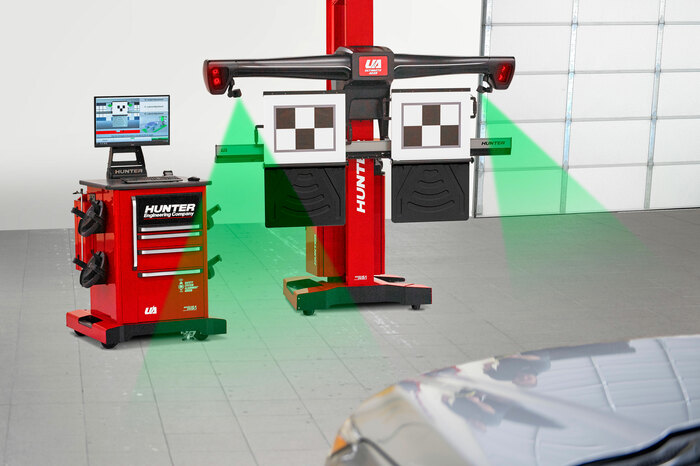
Alignment and static ADAS calibration
The ultimate space-saving solution is to perform ADAS calibrations and wheel alignment all in the same bay.

Mobility
Look for a portable design that allows the equipment to be conveniently moved to other working locations as needed.

Laser-guided target placements
Spot-on, laser-guided target placement eliminates tedious manual efforts and saves enormous time.

Error-proof steps
Error-proof monitoring of steps and position confirmation keeps technicians on track.
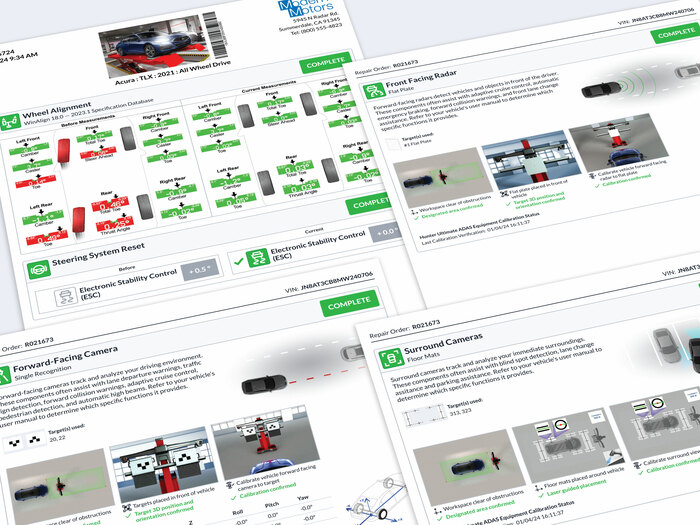
Full documentation
Equipment should offer a full and easily accessible document report that records confirmed placements and work completed in printed and digital formats.
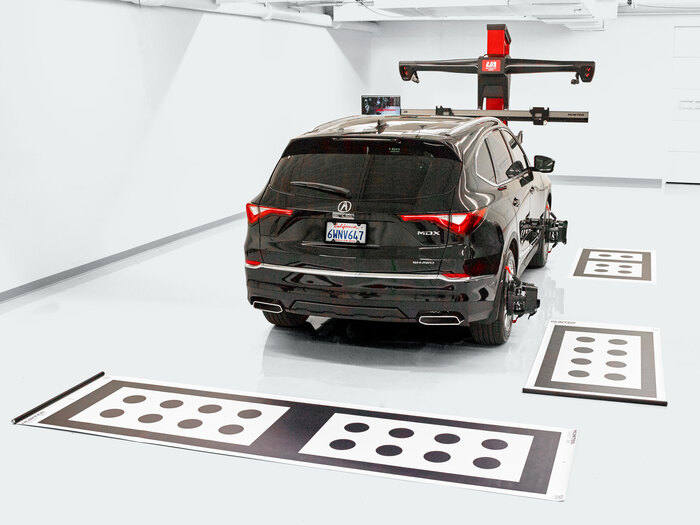
Full around-the-vehicle
Does the system quickly define target placements for static procedures?
Static requirements
What are the requirements for static ADAS calibrations?
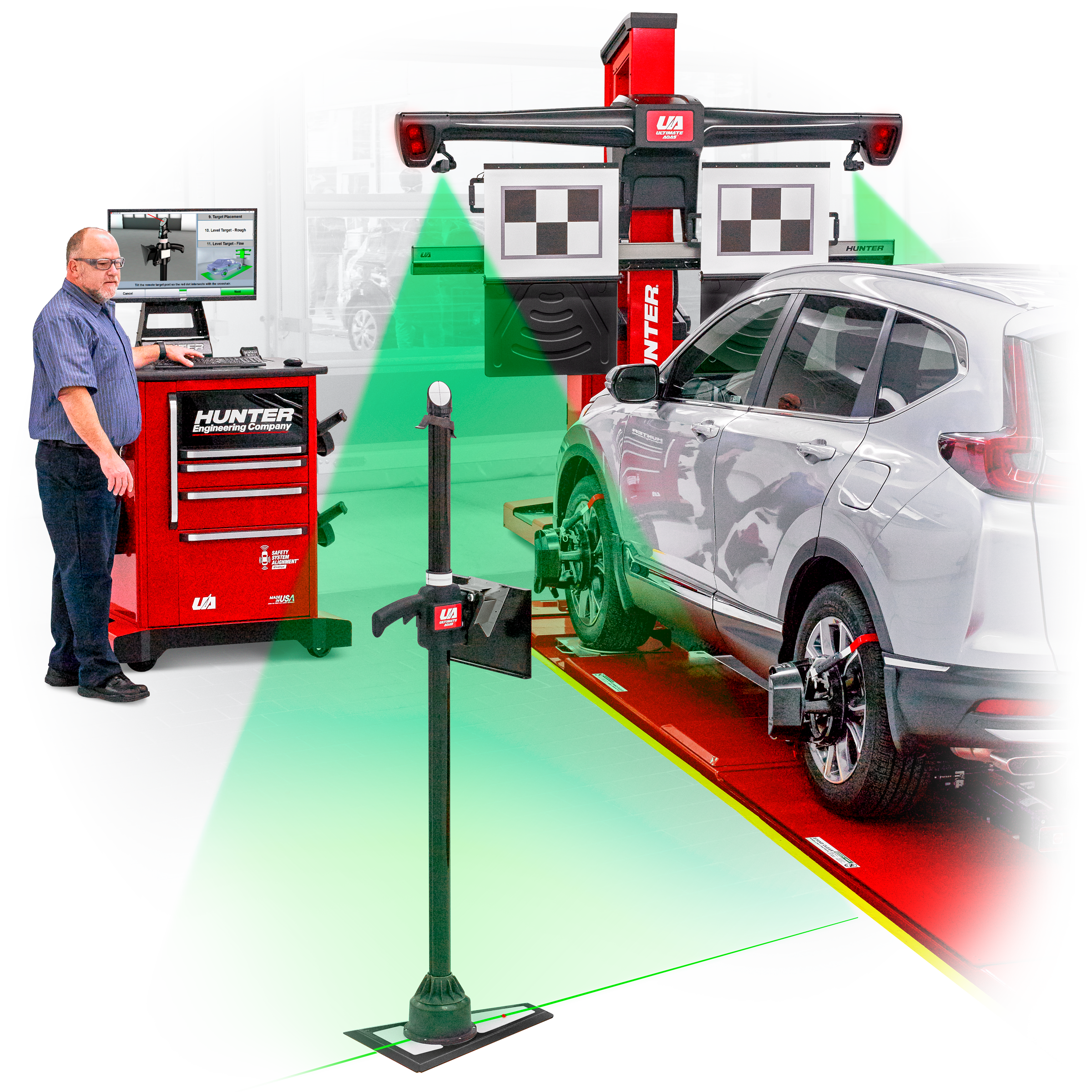
Floor space
Moderate lighting
Flat floor
Wall color
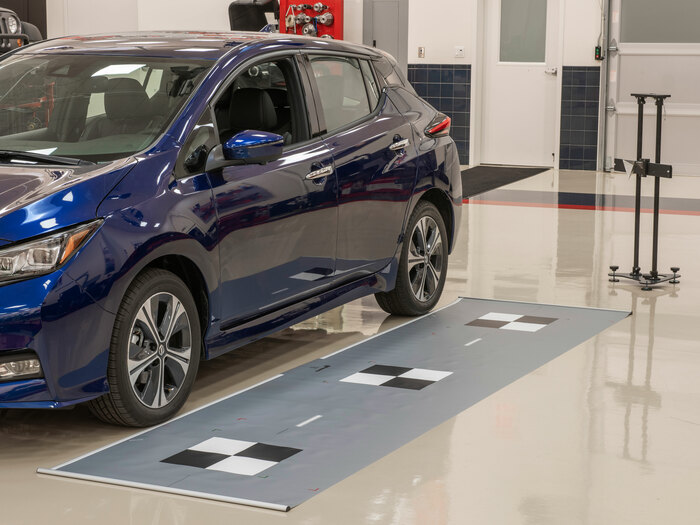
Floor space
It's a popular misconception that ADAS calibrations require huge floor space. The majority of forward-facing calibrations can be performed in almost any shop.
- Minimum — 25 ft. x 34 ft.
- Recommended — 30 ft. x 45 ft.
- Optimal — 40 ft. x 60 ft.
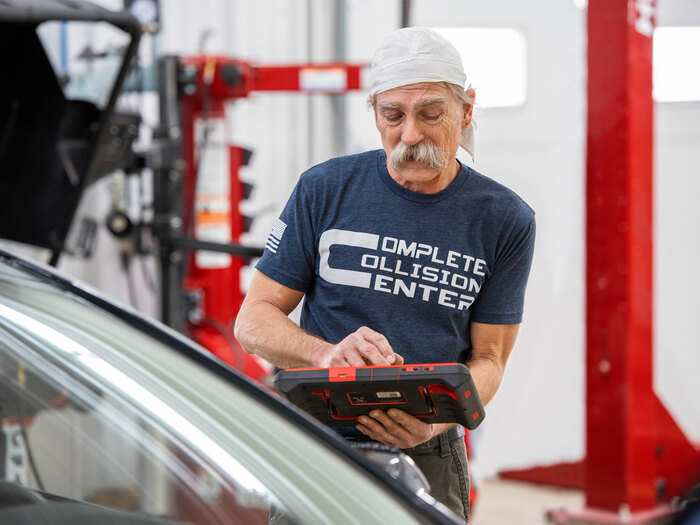
Moderate lighting
- The calibration area should be well lit with evenly diffused and distributed light.
- Cover any windows with direct sunlight during calibration.
- Avoid any directional lighting around the vehicle during calibration.
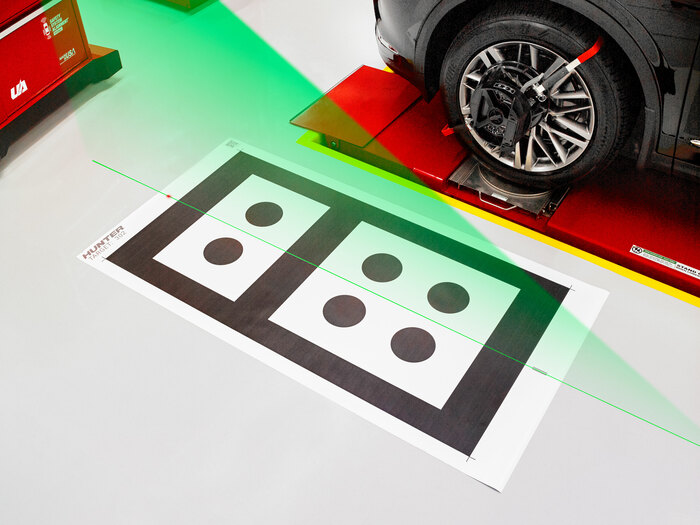
Flat floor
- The floor of the calibration space should be level, or ADAS equipment that compensates for non-level floors should be used. Learn more about Ultimate ADAS
- To evaluate a floor, take transit measurements at anticipated wheel footprints.
- The difference between the side-to-side and front-to-back measurements should be no more than 0.4 inches (10 mm).

Solid, neutral wall color
- The area outside of the calibration area should be clear of geometric patterns.
- Floors and walls should be one solid, light neutral color.
- During recalibration, the surroundings should be clear.
How much space is required?
The majority of forward-facing ADAS calibrations can be completed within 16.5 feet or less.
Dynamic requirements
What are the requirements for dynamic ADAS calibrations?

ADAS calibration tool
The most basic requirement for dynamic ADAS calibrations is having a reliable calibration tool.
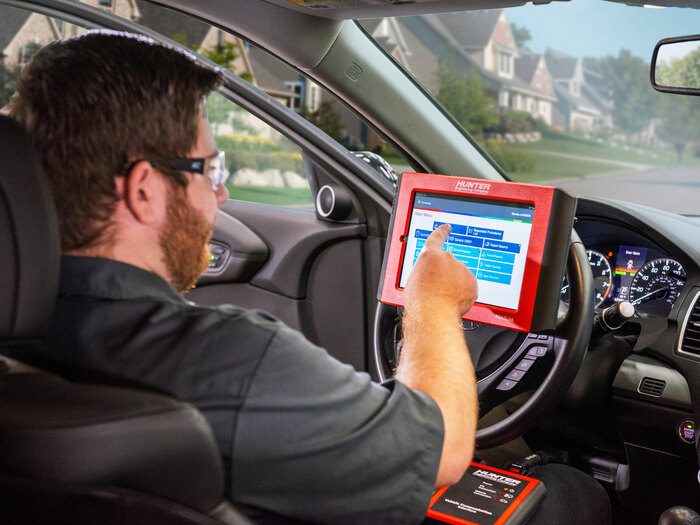
No shop space required
One of the biggest perks of dynamic ADAS calibrations is that no shop space is necessary.
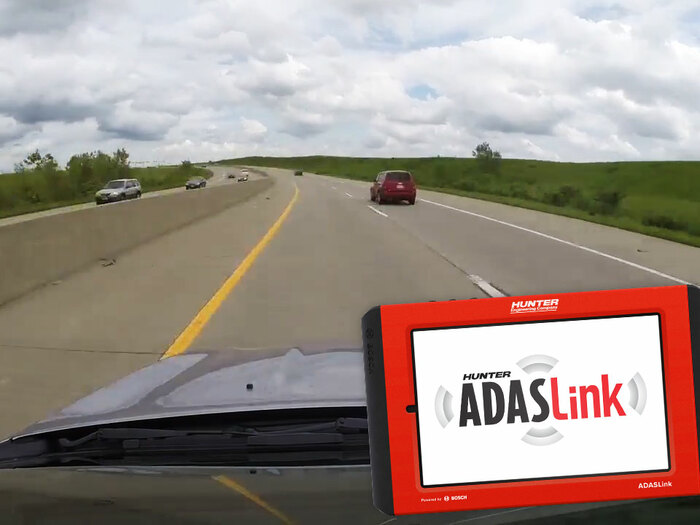
Nearby highway
A nearby highway with clear lane markings and little traffic so vehicles can reach speed without obstructions will be most convenient.
ADAS Calibration Equipment
Ultimate in-house ADAS solutions
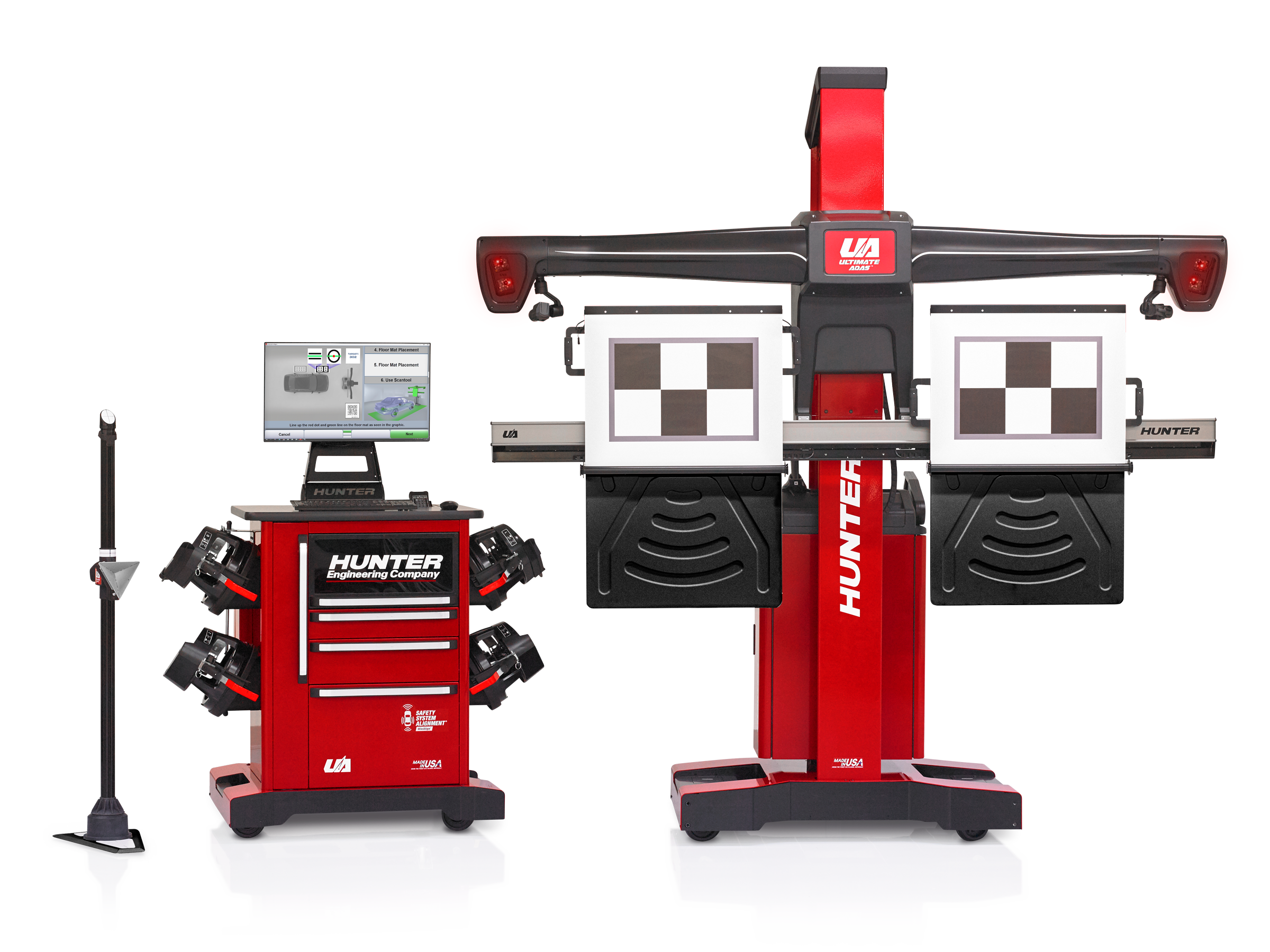
Ultimate ADAS
Laser-guided ADAS calibrations and wheel alignment and ADAS all in one
Wheel alignment and all static ADAS calibration are done in the same bay, with the same equipment.
Learn more
Made in the USA

3-year warranty
Local sales team
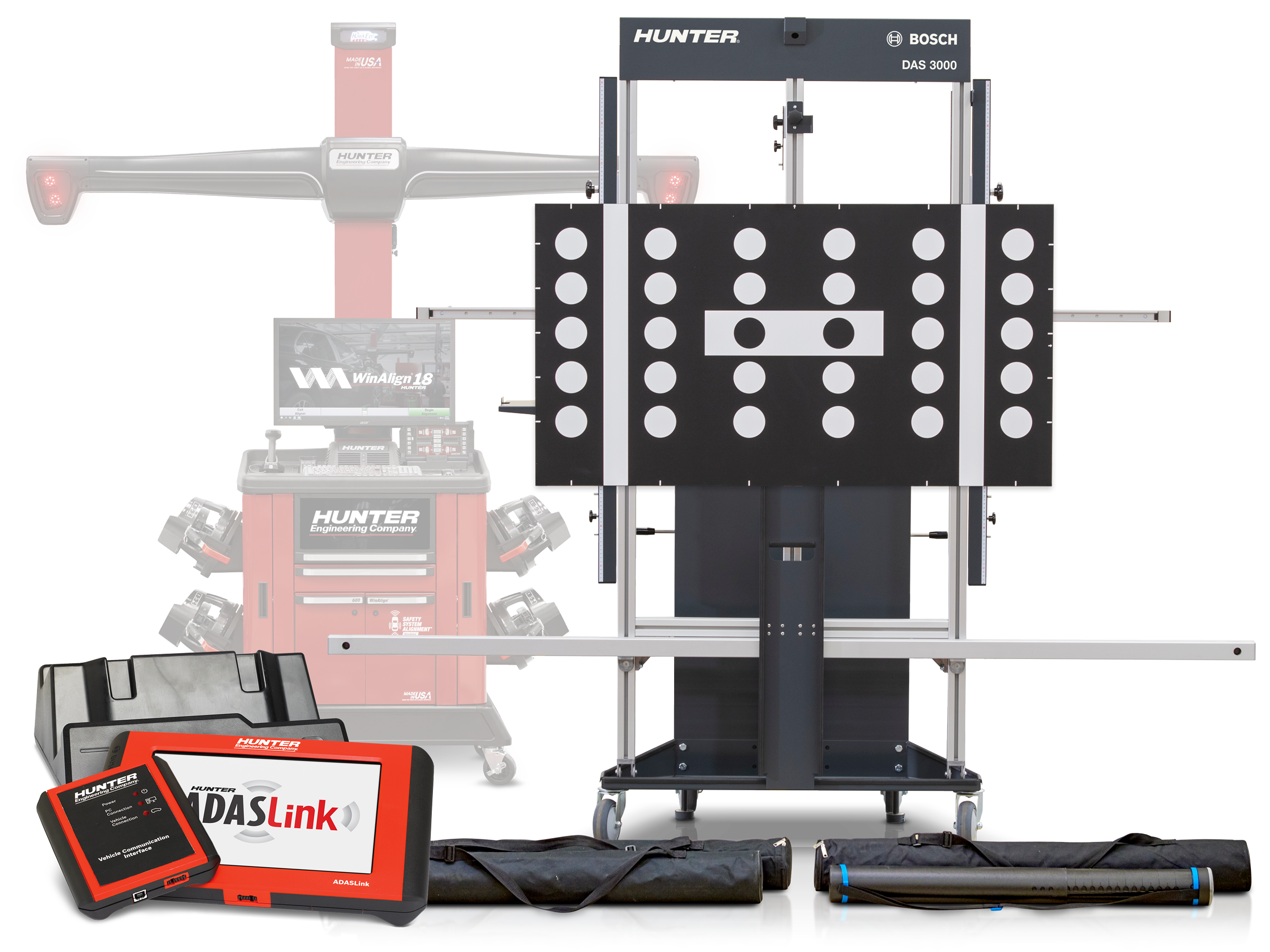
Already have an alignment system?
Excellent. You've already taken your first step toward ADAS calibrations. Now it's time to add dynamic calibration with ADASLink®.
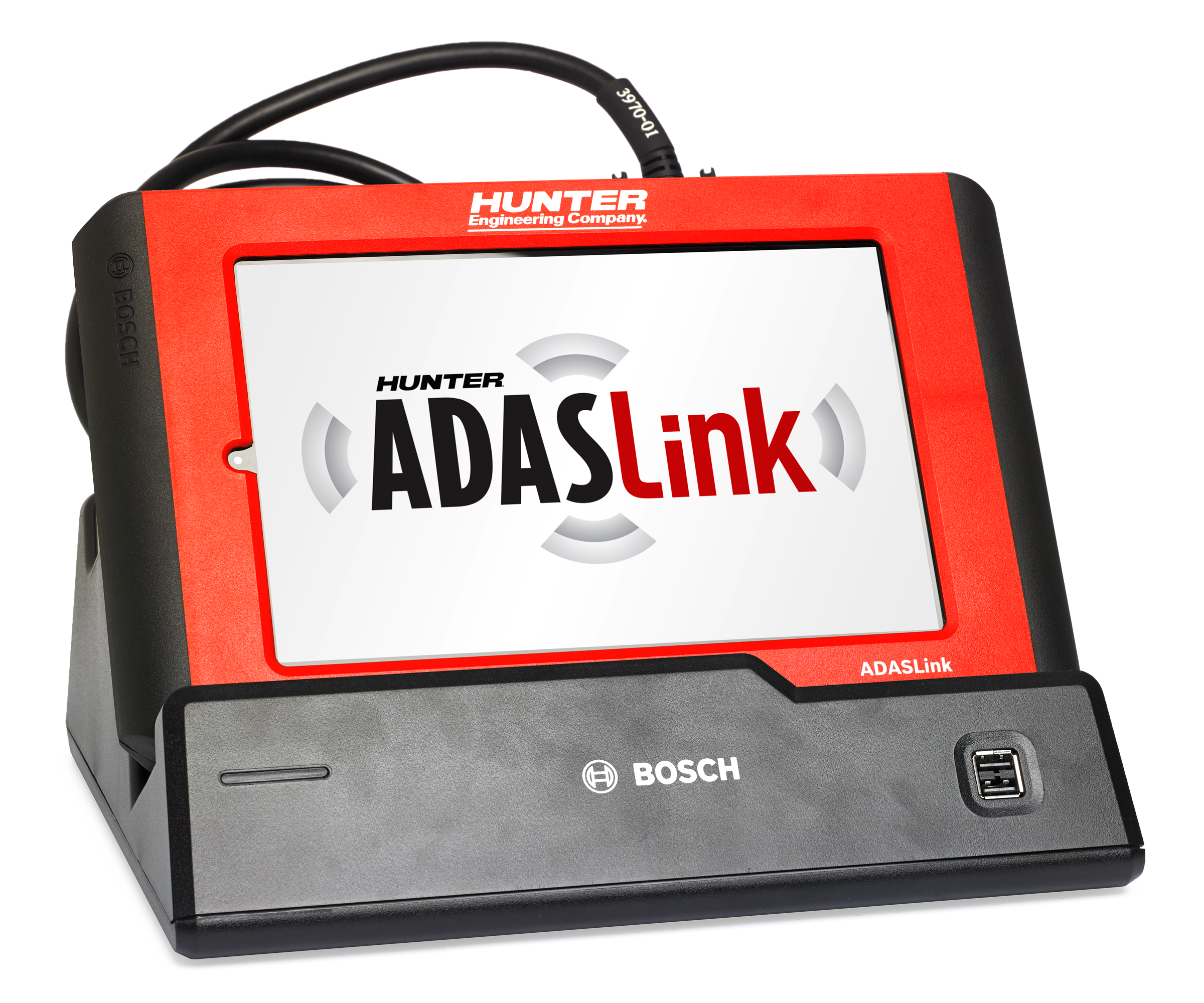
Ready to perform dynamic ADAS calibrations?
ADASLink® supports Ultimate ADAS and the DAS 3000 fixture.
Additional options

ADASLink® + DAS 3000 fixture
OptionalAll ADASLink® features
Static ADAS calibrations
Extensive OE target support
Guided positioning with ADASLink®
Includes first year of static calibration software

ADASLink® scan tool
OptionalDynamic (driving) ADAS calibrations
Full diagnostics with pre- and post-scan
WinAlign® software integration
On-screen step-by-step procedures
FCA secure gateway compatible

CodeLink®
StandardSteering angle sensor resets
WinAlign® software integration
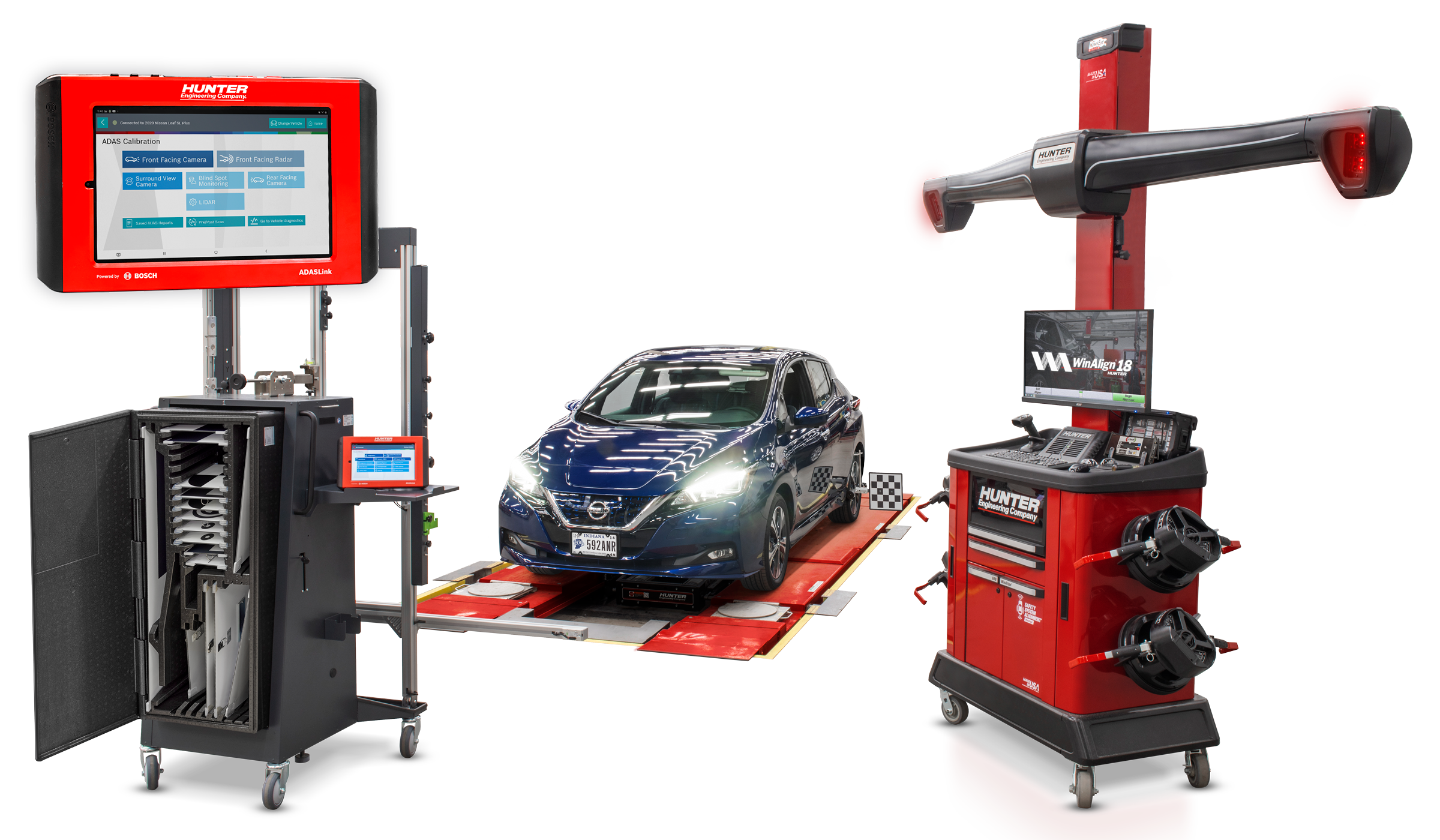
Wondering about your return on investment?
Learn how quickly today's ADAS calibration investment will pay itself off.
FAQ
